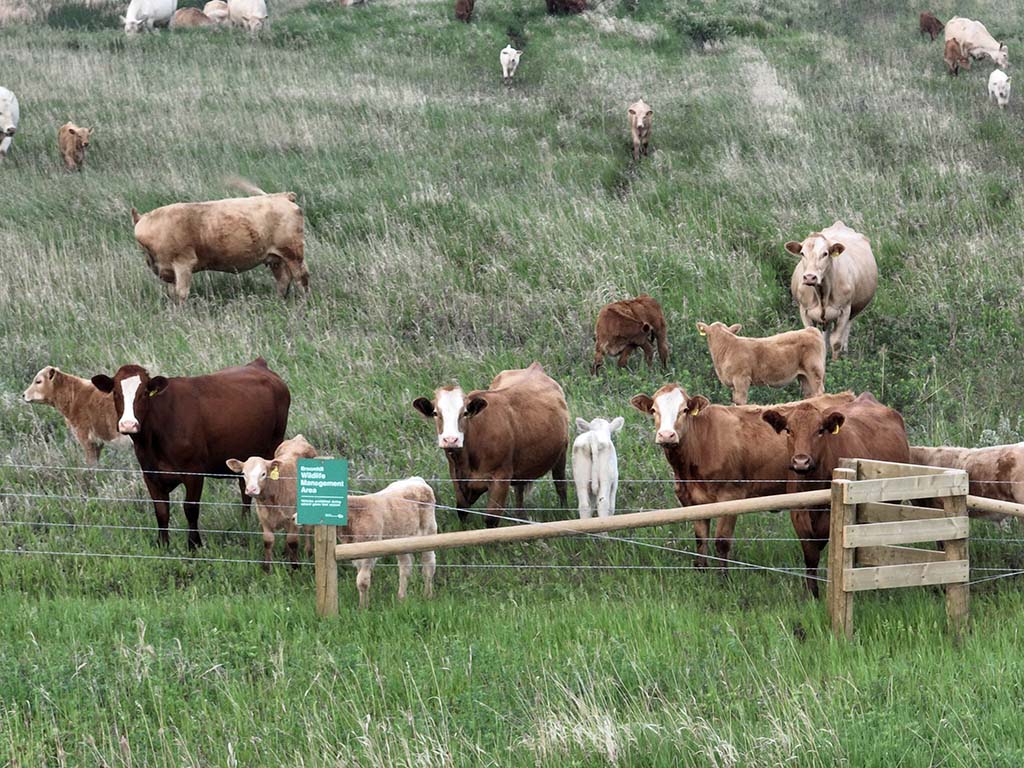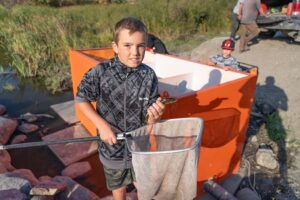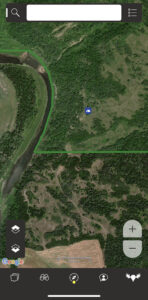The Manitoba Wildlife Federation is excited to announce the launch of a three-part video series profiling the WMA enhancement initiative pilot projects from a unique and in-depth perspective. This three-part series takes a deep dive into the processes and impacts of these pilot projects and explains the reasoning, application and need for this program across the province.
In this second video of the series, the MWF takes a peek behind the curtain of a sustainable rotational grazing system with one of the producers partnering in this project, Old Shore Cattle Company. Graham Tapley explains the processes involved in both managing cattle and the landscape simultaneously. The Tapley’s have been an amazing partner throughout the WMA planning process, contributing their time and vast knowledge to the project. The Tapley’s have an amazing understanding of rotational grazing and what it means to disturb the landscape, and more importantly providing the habitat with the appropriate amount of rest. Graham describes a little bit of how what a rotational grazing system looks like and how cattle can be used to improve wildlife habitat. To disturb these environments and retore the landscape to a more productive habitat for wildlife, knowledgeable and conservation minded producers such Old Shore Cattle Company are a vital piece of the puzzle that makes this project possible. As stated throughout the project, cattle are being used as a proxy for bison grazing to mimic the natural disturbances these habitats evolved with. Although cattle are not a perfect replacement, they offer the closest form of disturbance possible to attempt at restoring these habitats and recover some of the native prairie that is some of the most endangered and least protected habitats in Canada. Traditionally bison and wildfire would act as the ebb to the flow of the succession process, keeping the habitat in check and providing the grassland birds with suitable habitat for nesting. Without these natural disturbances occurring the rates of succession have increased at an unnatural rate, causing the grasslands to be overgrown with shrubs and woody vegetation. This loss of open grassland habitat is the reason for the decline of many of Manitoba’s Native grassland species.
This is where the WMA Enhancement Initiative Pilot Projects come in. The aim of this project is simple, reintroduce disturbance onto the landscapes to turn back the clock on the succession rates in the province.
Stay tuned for the third video in this series where we will look at the use of habitat management and disturbances from an academic standpoint. What does the research have to show for the effectiveness of these habitat management practices. The MWF will be sitting down for an interview with some of the University of Manitoba’s Environment and Resource Development Professors for a closer look at the science behind these management decisions.




